Polvos metálicos refractarios son una parte fascinante y esencial de la ciencia moderna de materiales, y desempeñan un papel fundamental en diversas industrias de alta tecnología. Estos materiales son conocidos por su excepcional resistencia al calor y al desgaste, lo que los hace inestimables en aplicaciones exigentes. En esta completa guía, nos adentraremos en el mundo de los polvos metálicos refractarios, explorando sus tipos, composiciones, propiedades, aplicaciones y mucho más.
Polvos metálicos refractarios
Los polvos metálicos refractarios se derivan de elementos que tienen puntos de fusión excepcionalmente altos y son resistentes al desgaste, la corrosión y la deformación. Entre estos metales se encuentran el wolframio, el molibdeno, el tántalo, el niobio y el renio. Se utilizan en entornos que requieren materiales capaces de soportar condiciones extremas, como la industria aeroespacial, los reactores nucleares y los hornos de alta temperatura.

Tipos de polvos metálicos refractarios
Para conocer a fondo los polvos metálicos refractarios, veamos más de cerca algunos tipos específicos y sus propiedades únicas:
| Metal | Descripción |
|---|---|
| Tungsteno (W) | Conocido por el punto de fusión y la densidad más elevados, es ideal para aplicaciones de alta temperatura. |
| Molibdeno (Mo) | Excelente conductividad térmica y baja dilatación térmica, utilizado en electrónica e iluminación. |
| Tántalo (Ta) | Muy resistente a la corrosión, se utiliza en dispositivos médicos y equipos de procesamiento químico. |
| Niobio (Nb) | Alta ductilidad y superconductividad, utilizado en superaleaciones y electrónica. |
| Renio (Re) | Alto punto de fusión y propiedades eléctricas únicas, utilizado en motores a reacción y electrónica. |
| Circonio (Zr) | Excelente resistencia a la corrosión y solidez, utilizado en reactores nucleares e implantes médicos. |
| Hafnio (Hf) | Alta absorción de neutrones, utilizado en reactores nucleares y componentes aeroespaciales. |
| Vanadio (V) | Buena solidez y resistencia a la temperatura, se utiliza en superaleaciones y herramientas. |
| Cromo (Cr) | Excelente dureza y resistencia a la corrosión, utilizado en revestimientos y superaleaciones. |
| Titanio (Ti) | Elevada relación resistencia/peso, utilizada en aplicaciones aeroespaciales, médicas e industriales. |
Composición de Polvos de metales refractarios
La composición de los polvos metálicos refractarios es fundamental para su rendimiento. Estos metales suelen combinarse con otros elementos para mejorar propiedades específicas:
| Metal | Composición | Propiedades mejoradas |
|---|---|---|
| Tungsteno | Puro o aleado con Ni, Fe, Cu | Mayor maquinabilidad y resistencia. |
| Molibdeno | Puro o aleado con Ti, Zr, C | Resistencia a la fluencia y solidez mejoradas. |
| Tantalio | Puro o aleado con W, Hf | Mayor resistencia a la corrosión y solidez. |
| Niobio | Puro o aleado con Ti, Al | Superconductividad y resistencia mejoradas. |
| Renio | Puro o aleado con Mo, W | Mayor estabilidad térmica y resistencia. |
Características de los polvos metálicos refractarios
Los polvos metálicos refractarios presentan características únicas que los hacen idóneos para aplicaciones de alto rendimiento:
- Puntos de fusión elevados: Imprescindible para aplicaciones que impliquen calor extremo.
- Dureza excepcional: Proporciona durabilidad y resistencia al desgaste.
- Alta densidad: Contribuye a la resistencia y la estabilidad bajo tensión.
- Resistencia a la corrosión: Garantiza la longevidad en entornos difíciles.
- Buena conductividad térmica y eléctrica: Importante para aplicaciones electrónicas y de alta temperatura.


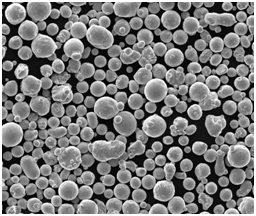
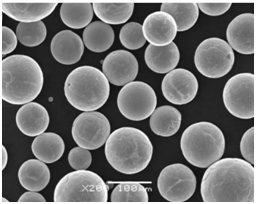
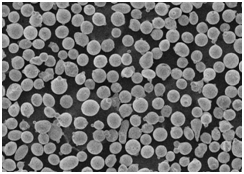
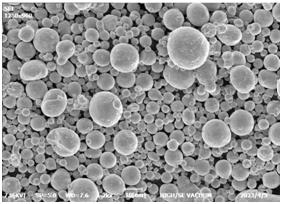
Aplicaciones de los polvos metálicos refractarios
Los polvos metálicos refractarios se utilizan en diversas industrias debido a sus notables propiedades:
| Industria | Solicitud |
|---|---|
| Aeroespacial | Componentes de motores a reacción, toberas de cohetes, escudos térmicos. |
| Electrónica | Dispositivos semiconductores, filamentos, contactos. |
| Médico | Instrumentos quirúrgicos, implantes, dispositivos dentales. |
| Nuclear | Componentes del reactor, blindaje contra las radiaciones, revestimiento del combustible. |
| Procesado químico | Equipos, catalizadores y recipientes de reacción resistentes a la corrosión. |
| Industrial | Herramientas de corte, moldes, matrices, revestimientos resistentes al desgaste. |
Especificaciones, tamaños, calidades, normas
Comprender las especificaciones y normas de los polvos metálicos refractarios es crucial para su aplicación:
| Metal | Tamaños (micras) | Los grados | Normas |
|---|---|---|---|
| Tungsteno | 1-100 | W1, W2, W3 | ASTM B777, ISO 4497 |
| Molibdeno | 1-50 | Mo1, Mo2, TZM | ASTM B386, ISO 5755 |
| Tantalio | 1-40 | Ta1, Ta2 | ASTM B708, ISO 13782 |
| Niobio | 1-60 | Nb1, Nb2, Nb3 | ASTM B393, ISO 13782 |
| Renio | 1-20 | Re1, Re2 | ASTM B708, ISO 13782 |
Proveedores y precios
Encontrar proveedores fiables y conocer los precios es esencial para la contratación:
| Proveedor | Metal | Precio (por kg) | Información de contacto |
|---|---|---|---|
| Tungsteno mundial | Tungsteno | $250 | [email protected] |
| Molibdeno del Medio Oeste | Molibdeno | $150 | [email protected] |
| Suministro de tántalo | Tantalio | $300 | [email protected] |
| Fuentes de niobio | Niobio | $200 | [email protected] |
| Renio Raro | Renio | $400 | [email protected] |
Ventajas y limitaciones de los polvos metálicos refractarios
Aunque los polvos metálicos refractarios ofrecen muchas ventajas, también tienen algunas limitaciones:
| Ventajas | Limitaciones |
|---|---|
| Resistencia a altas temperaturas | Coste elevado |
| Excelente resistencia mecánica | Difícil de mecanizar |
| Resistencia superior a la corrosión | Disponibilidad limitada |
| Buena conductividad eléctrica y térmica | Pesado y denso |
| Duradero y resistente | Riesgos potenciales para la salud durante la manipulación |
Comparación de polvos metálicos refractarios
A la hora de elegir entre distintos polvos metálicos refractarios, es importante comparar sus propiedades e idoneidad para aplicaciones específicas:
| Metal | Punto de fusión (°C) | Densidad (g/cm³) | Resistencia a la corrosión | Conductividad térmica (W/m-K) | Aplicaciones |
|---|---|---|---|---|---|
| Tungsteno | 3422 | 19.25 | Excelente | 173 | Aeroespacial, electrónica, iluminación |
| Molibdeno | 2623 | 10.28 | Bien | 138 | Electrónica, fundición de vidrio, iluminación |
| Tantalio | 3017 | 16.65 | Superior | 57 | Productos sanitarios, procesamiento químico |
| Niobio | 2477 | 8.57 | Bien | 54 | Superaleaciones, electrónica, medicina |
| Renio | 3186 | 21.02 | Excelente | 48 | Motores a reacción, electrónica, química |
Análisis detallado de Polvos de metales refractarios
Profundicemos ahora en los detalles de algunos polvos metálicos refractarios clave, destacando sus propiedades, aplicaciones y ventajas únicas.
Polvo de tungsteno
El polvo de wolframio es famoso por su punto de fusión y densidad increíblemente altos. Esto lo hace ideal para aplicaciones que requieren materiales que soporten temperaturas extremas y tensiones mecánicas. El tungsteno se utiliza habitualmente en la industria aeroespacial para componentes de motores a reacción, en la electrónica para filamentos y en dispositivos médicos para blindaje contra radiaciones.
Polvo de molibdeno
El polvo de molibdeno es conocido por su excelente conductividad térmica y su baja expansión térmica. Estas propiedades lo hacen adecuado para aplicaciones en electrónica, como disipadores de calor y transistores, así como en las industrias de iluminación y fundición de vidrio. La capacidad del molibdeno para mantener su resistencia a altas temperaturas es una ventaja clave.
Polvo de tántalo
El polvo de tántalo destaca por su gran resistencia a la corrosión. Esto lo hace inestimable en aplicaciones médicas y de procesamiento químico. El tántalo se utiliza a menudo en instrumentos quirúrgicos, implantes y equipos que manipulan sustancias altamente corrosivas. Su capacidad para resistir la corrosión garantiza longevidad y fiabilidad.
Polvo de niobio
El polvo de niobio destaca por su gran ductilidad y superconductividad. Esto lo convierte en un componente esencial de las superaleaciones utilizadas en la industria aeroespacial y electrónica. Las propiedades superconductoras del niobio se utilizan en dispositivos de imagen médica y aceleradores de partículas, donde es crucial mantener bajas temperaturas y un rendimiento eficiente.
Renio en polvo
El polvo de renio es apreciado por su alto punto de fusión y sus propiedades eléctricas únicas. Se utiliza en motores de turbina de alta temperatura y en componentes electrónicos que requieren materiales capaces de soportar condiciones extremas. La excepcional estabilidad térmica y resistencia del renio lo convierten en un material fundamental en entornos exigentes.
Análisis comparativo: El wolframio frente al molibdeno
Si comparamos el wolframio con el molibdeno, ambos metales ofrecen resistencia a altas temperaturas, pero el punto de fusión más alto del wolframio (3.422 ºC frente a 2.623 ºC) le da ventaja en aplicaciones de temperaturas ultraelevadas. Sin embargo, la mayor conductividad térmica y la menor densidad del molibdeno lo convierten en la mejor opción para aplicaciones que requieren una disipación eficaz del calor y un menor peso.
Análisis comparativo: Tántalo frente a niobio
Tanto el tántalo como el niobio destacan por su resistencia a la corrosión, pero la mayor densidad del tántalo (16,65 g/cm³ frente a 8,57 g/cm³) lo hace más adecuado para aplicaciones en las que el peso es menos importante y se requiere la máxima resistencia a la corrosión. Sin embargo, la gran ductilidad y superconductividad del niobio lo convierten en la opción preferida para la electrónica avanzada y las aplicaciones aeroespaciales.
Análisis comparativo: El renio frente al wolframio
Tanto el renio como el wolframio se utilizan en aplicaciones de alta temperatura, pero las propiedades eléctricas únicas del renio y su precio más elevado lo hacen ideal para la electrónica especializada y los motores a reacción. La mayor densidad y el menor coste del tungsteno lo hacen más práctico para aplicaciones generales de alta temperatura y alta resistencia.
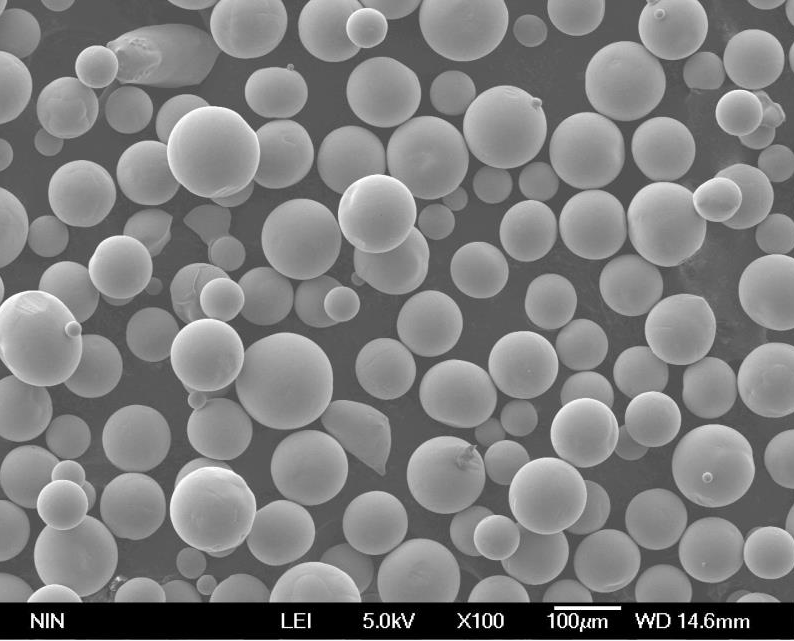
Preguntas más frecuentes
| Pregunta | Respuesta |
|---|---|
| ¿Qué son los polvos metálicos refractarios? | Los polvos metálicos refractarios son materiales con altos puntos de fusión y una resistencia excepcional al calor, el desgaste y la corrosión. |
| ¿Cuáles son las aplicaciones más comunes de los polvos metálicos refractarios? | Se utilizan en la industria aeroespacial, electrónica, dispositivos médicos, reactores nucleares y equipos de procesamiento químico. |
| ¿Cómo se fabrican los polvos metálicos refractarios? | Suelen producirse mediante procesos como la aleación mecánica, la deposición química de vapores y la reducción de óxidos metálicos. |
| ¿Cuáles son las principales propiedades del polvo de wolframio? | El polvo de wolframio es conocido por su alto punto de fusión, densidad y resistencia, lo que lo hace ideal para aplicaciones de alta temperatura. |
| ¿Por qué se utiliza polvo de molibdeno en electrónica? | El polvo de molibdeno tiene una excelente conductividad térmica y una baja expansión térmica, por lo que es adecuado para disipadores de calor y componentes electrónicos. |
| ¿Qué hace que el polvo de tántalo sea resistente a la corrosión? | El polvo de tántalo tiene una capa de óxido protectora que resiste la corrosión, incluso en entornos químicos agresivos. |
| ¿Cómo se utiliza el polvo de niobio en aplicaciones aeroespaciales? | El polvo de niobio se utiliza en superaleaciones para motores a reacción y otros componentes aeroespaciales de alto rendimiento debido a su gran resistencia y ductilidad. |
| ¿Qué ventajas tiene el uso de polvo de renio en electrónica? | El polvo de renio ofrece unas propiedades eléctricas únicas y una gran estabilidad térmica, por lo que es ideal para componentes electrónicos de alto rendimiento. |
| ¿Existen riesgos para la salud asociados a la manipulación de polvos metálicos refractarios? | Sí, algunos polvos de metales refractarios pueden plantear riesgos para la salud si se inhalan o ingieren. Deben tomarse las medidas de seguridad adecuadas durante su manipulación y procesamiento. |
| ¿Dónde puedo comprar polvos de metales refractarios? | Los polvos metálicos refractarios pueden adquirirse a proveedores especializados como Global Tungsten, Midwest Molybdenum, Tantalum Supply, Niobium Sources y Rhenium Rare. |
Conclusión
La selección del polvo metálico refractario adecuado depende de los requisitos específicos de su aplicación. Tenga en cuenta factores como el punto de fusión, la conductividad térmica, la resistencia a la corrosión, la densidad y el coste. Conocer estas propiedades le ayudará a tomar una decisión informada y a garantizar el éxito de su proyecto.

